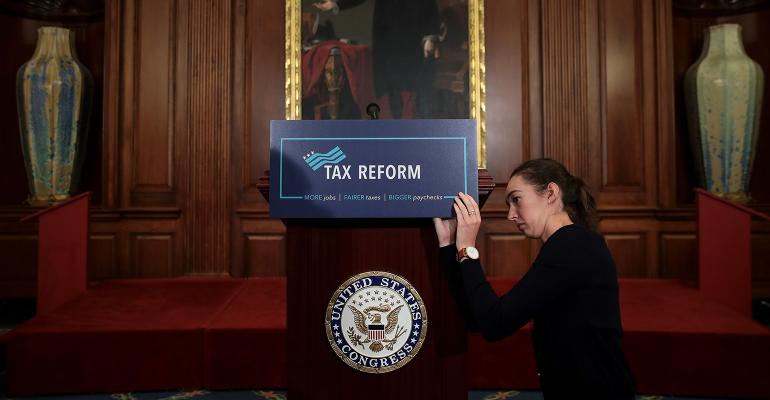By Patrick Beaudry
Now that the Senate has passed their version of the Tax Cuts and Jobs Act with a vote of 51 to 49, there are expectations of a final bill to land on the president’s desk for signature sometime before the end of the year or the first few weeks of 2018. While this would indicate that we are near the finish line of the legislative process, the tax reform effort still has a way to go before President Trump can sign it into law.
Both the House and the Senate have passed their versions and there are many similarities, including the limiting of itemized deductions to mortgage interest, charitable contributions and property taxes (up to $10,000) and the doubling of the estate, gift and generation-skipping transfer tax exemptions from $5.6 million to $11.2 million in 2018.
These versions also differ in a number of ways, sometimes substantially (see chart below). These differences will have to be resolved through a legislative conference committee. Some differences should be easy to reconcile, but resolving others is expected to take time and effort. Under the current rules, the committee cannot insert new provisions into the revised bill or delete provisions that were agreed upon by both houses, except in limited circumstances. Considering the number of differences that need to be resolved, it’s a safe bet to assume the committee’s efforts will concentrate on these differences, rather than the similarities.

After the committee’s work is done and they produce a single bill, both the House and Senate will need to vote to approve the revised version before it can be sent to the president. Because the bill passed the Senate by a single vote, the committee can’t afford to produce a bill that has less than full support of the Senate.
What to Do Now
It’s rarely a good idea to make big changes while the legislative process is still ongoing, but waiting until legislation is signed may not provide enough time to make changes before the end of the year. Still, there are things that taxpayers can do now that can offer protection against what may be coming in 2018, with no or minimal negative consequences, regardless of what’s included in the final bill. Taxpayers should start planning now and consult with their tax advisors to determine the actions that make sense for them in light of their unique circumstances.
Consider Accelerating Itemized Deductions That Are Scheduled for Elimination
Many itemized deductions are targeted for elimination or may be limited under these bills, including state and local income tax, property tax and medical expenses, aAccelerating these into 2017 may provide a benefit that may go away in 2018. Consideration may also be given to accelerating income that would otherwise be recognized in 2018 or 2019, as the benefit of the state income tax deduction in 2017 may result in a lower overall tax bill. Special consideration should be given to how this may impact the imposition of the Alternative Minimum Tax for 2017 (and possibly future years). While the AMT was targeted for elimination in 2018 in the House bill, it made its way back into the final Senate version for future years.
Consider Recognizing Tax Losses Prior to Year-End
Taxpayers may benefit from recognizing losses in 2017 while the current rules regarding assignment of cost basis are still in place. The Senate bill would require a first-in, first-out method of assigning cost basis for sold securities. This may limit the availability of tax loss harvesting, since identification of specific tax lots for capital gains purposes would no longer be allowed. There appears to be no detrimental effect for taking capital losses this year because they can be carried forward indefinitely to shelter future gains.
Consider Delaying Gifts That Incur Gift Tax Until 2018
If you are considering making any wealth transfers that may result in a gift tax liability, you may want to delay these gifts until 2018 to capitalize on the increased gift exemption. This doesn’t include gifts that won’t cause a gift tax liability, such as annual exclusion gifts, gifts that are covered by the existing $5.49 million gift exemption, gifts covered under the unlimited spousal exclusion, or unlimited tuition or medical gifts. Since the increased gift exemption is included in both versions of the bill, it makes sense to delay gifting, and waiting until next year may prove beneficial from a total tax perspective.
Patrick Beaudry is a director of Wealth Planning at Abbot Downing in the Winston-Salem, N.C. office.





